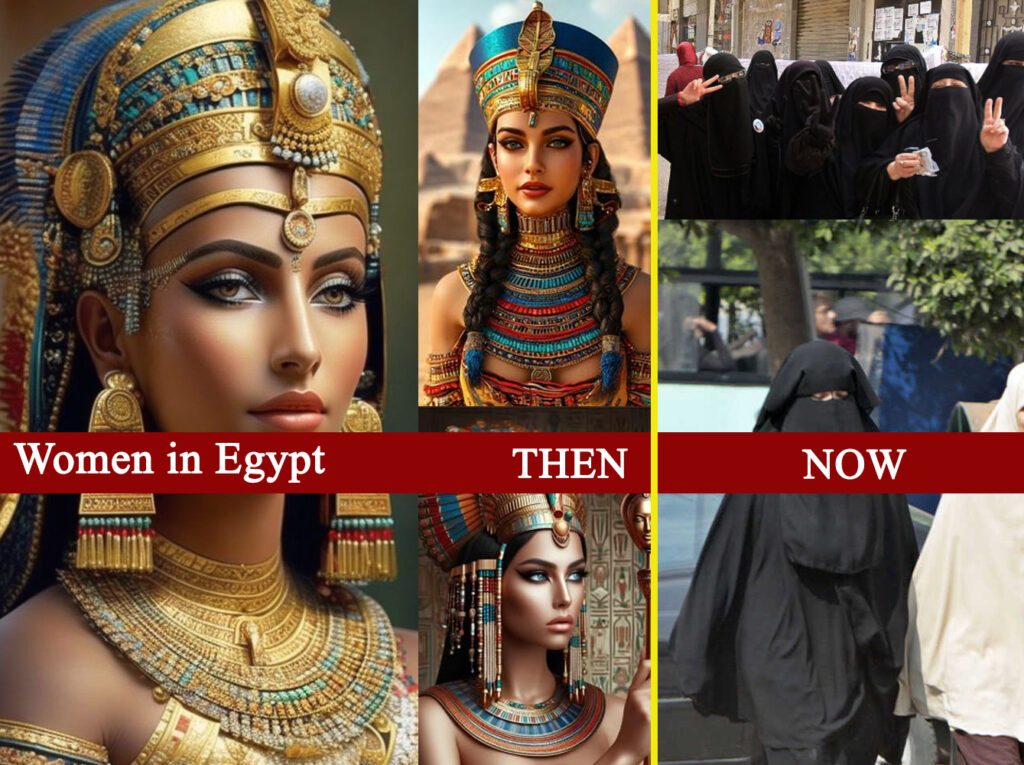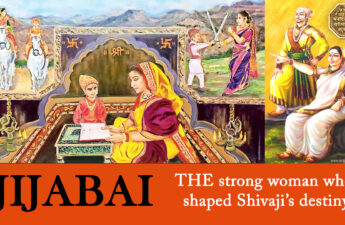The Glory of Ancient Egypt
Egypt, a cradle of human civilization, thrived for over 3,000 years as a beacon of cultural, scientific, and artistic achievement. The ancient Egyptians constructed monumental pyramids, developed hieroglyphic writing, and lived by the principle of ma’at—harmony and balance. Their polytheistic religion, centered on gods like Isis and Osiris, shaped daily life, and their temples, such as those at Karnak and Luxor, were architectural wonders adorned with intricate carvings and statues. Women held a remarkable status, with rights to own property, initiate divorce, and even rule as pharaohs. Cleopatra VII (51–30 BCE), a symbol of beauty, intellect, and power, epitomized this vibrant era, leading Egypt with sophistication and speaking multiple languages.
The Prelude to Decline: Greco-Roman and Christian Influences
The decline of ancient Egyptian culture began before the Islamic invasion. The Ptolemaic Period (323–30 BCE) and Roman conquest (30 BCE) introduced Greco-Roman laws, followed by Christianity in the 4th century CE. These shifts eroded traditional Egyptian religious practices and diminished women’s status, as Christian teachings often emphasized male authority. Temples were repurposed, and the old ways began to fade, setting the stage for a more profound transformation.
The Islamic Conquest of Egypt
The most significant change came with the Arab-Islamic invasion of 639–642 CE, led by ʿAmr ibn al-ʿĀṣ under Caliph ʿUmar I. With a force of 4,000 men, later reinforced, ʿAmr defeated the Byzantine rulers of Egypt, initiating a process of Islamization and Arabization. This conquest was part of a broader wave of Islamic expansion, followed by rule under the Umayyad (661–750 CE), Abbasid (750–969 CE), Fatimid (969–1171 CE), Ayyubid (1171–1250 CE), and Mamluk (1250–1517 CE) dynasties, before Egypt’s absorption into the Ottoman Empire in 1517 CE. Each regime further entrenched Islamic culture, reshaping Egypt’s identity.
The Fate of Temples and Idols
While the Islamic invaders did not systematically destroy all ancient temples, many were repurposed or left to decay. Pagan practices were suppressed, and temples like Philae, once a center for Isis worship, were closed or converted into churches and later mosques. Statues and idols, seen as symbols of idolatry, were often defaced or destroyed. The Great Library of Alexandria, already damaged under Roman and Christian rule, saw its final remnants lost during the Islamic period, as Islamic scholars prioritized texts aligned with their worldview.

Women in Egypt: From Cleopatra to the Burqa
In ancient Egypt, women like Cleopatra were celebrated for their autonomy and leadership, dressing in elegant, revealing garments adorned with gold, as depicted in the image above of a regal Egyptian queen. After the Islamic conquest, cultural norms shifted toward modesty and seclusion, influenced by Islamic law. The adoption of the hijab, and later the niqab or burqa, as shown in the modern image in the post, marked a stark contrast. Women’s public roles diminished, and their legal rights, though present under Islamic law, were more restrictive compared to the freedoms of ancient Egyptian women, reflecting a broader cultural shift.
Introspective Reflection: The Impact of Islam on Ancient Civilizations
A Pattern of Cultural Transformation
Since the 7th century, Islam’s rise has reshaped many of the world’s great civilizations. From Egypt to Persia and India, cultures that once thrived with diversity were transformed through conquest, assimilation, and conversion. In Egypt, the gods were silenced, and their temples abandoned. In India, Muslim chroniclers like those documenting Sultan Muhammed bin Tughlaq (1325–1351 CE) boasted of destroying Hindu temples and breaking idols, viewing such acts as fulfilling jihad. The cultural heritage of these civilizations—art, literature, and traditions—was often erased or subordinated to Islamic norms.
The Cost of Cultural Loss
What does this mean for humanity? The loss of cultural diversity diminishes our collective memory. Each civilization contributed uniquely to human achievement, and their erasure leaves us wondering what might have been. Could Egypt’s scientific advancements, India’s philosophical inquiries, or Persia’s artistic traditions have evolved further without these conquests? The image above —a regal Egyptian queen beside a woman in a burqa—prompts this reflection. It’s a visual reminder of a world lost, a civilization buried under time, replaced by a new order that, while rich, could not preserve the past’s multiplicity.
A Call to Reflect
As we consider this history, we must ask: what responsibility do we bear to protect cultural diversity today? The tides of history continue to flow, and without vigilance, more cultures may be swept away. This reflection invites readers to ponder the fragility of heritage and the importance of safeguarding it for future generations.





